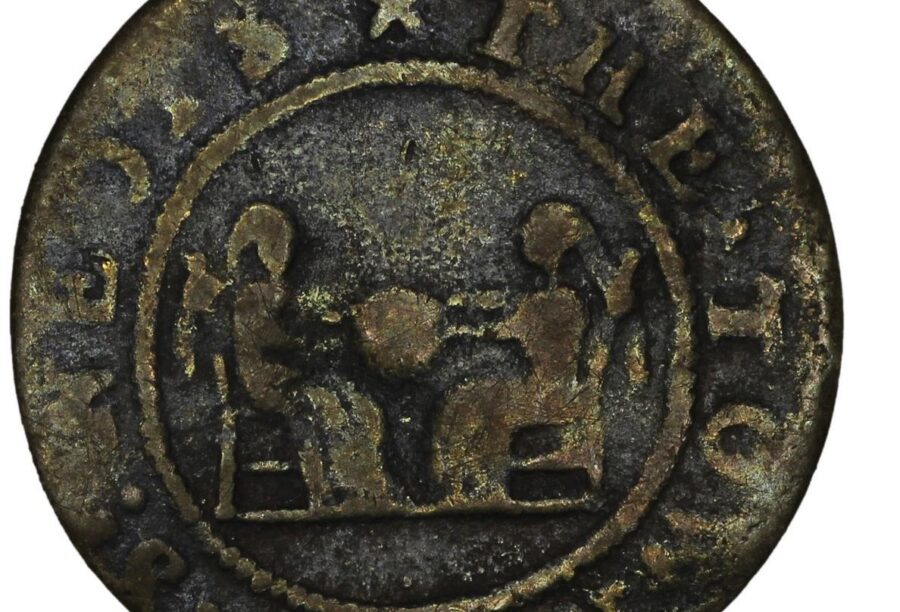At a conference on ‘Objects of Poverty’ recently we heard an excellent talk by Laura Burnett, doctoral student at the University of Exeter, on mid seventeenth-century trade tokens. We were inspired to write a piece on the representation of lace and lacemakers on these tokens, but we find our colleagues at LaceNews have beaten us to it, with two detailed surveys of the use of tokens in the lace trade.
Collecting: English Tokens related to the Lace Trade – Part I, 17th and 18th centuries
Collecting: English Tokens related to the Lace Trade – Part II, 19th Century
None the less, we can’t let the topic drop completely.

Halfpenny token issued by the Overseers of the Poor for the town of St. Neots. © The Trustees of the British Museum. Asset number 1612971758.
This halfpenny token was issued by the Overseers of the Poor for the town of Saint Neots (then in Huntingdonshire, now in Cambridgeshire), on the edge of the East Midlands lace districts. It is not dated, but according to Laura Burnett it is probably a late example of this kind of coinage, from the 1660s or early 1670s. Such tokens came into widespread use in the aftermath of the English Civil War and during the reign of Charles II, due to a shortage of small denomination coins. This lack particularly affected the poor who were most likely to receive and to spend small amounts of money, and who were also the least able to obtain credit. Both private suppliers – such as bakers, grocers and publicans – and municipal authorities such as Poor Law overseers – stepped in to overcome this supply side problem. Tokens could be used locally as an alternative to coins.
Tokens were mostly manufactured in London by craftsmen associated with the Mint. However, the range of images they carry – coats of arms, landmarks, other occupations – shows that the clients must have supplied both the text and the image to be used to make the stamp. This St. Neots’ token appears to show two lacemakers working on a pillow, similar to pillows used in the East Midlands region until the twentieth century. It is interesting, then, that even in the seventeenth century, lacemaking was an occupation associated with poverty.
So here’s our question, is this the earliest visual representation of an English lacemaker? If you know of any representation that predates this token, please do let us know.







